Australia So Much to See
Western Plains Dubbo Zoo, New South Wales
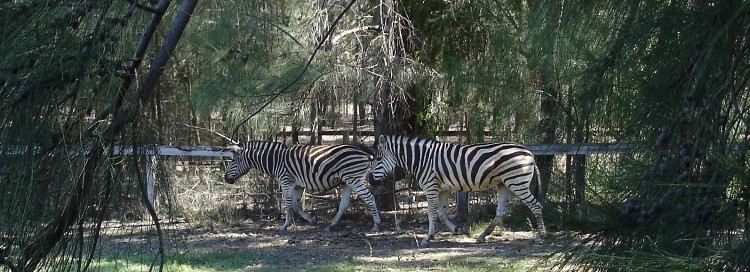
The one place we were determined not to miss in New South Wales was the Western Plains Zoo at Dubbo.
Animals are mostly in paddock
style enclosures, surrounded by an electric fence, then a higher viewing bank which helps to hide the fence, giving the look of animals
roaming free. Taronga is home to over 4,000 animals from over 350 species in a 300 hectare site. This site was an army
base during world war two, with the zoo being established here in 1977, and has been undergoing constant development and improvements. It is also a breeding environment for many of these animals.
With one ticket covering two days, this is needed to see everything. There are also very good keeper talks at feeding time for some animals, which are well worth going to if you can get to them in time. A site map and details of keeper talk times are obtained from the visitor centre. List of keeper talks and daily timetable
Entrance
gates are open between nine am and four pm. Tickets can now also be purchased on line. Concessions apply for eligible card holders
including Seniors Cards, Health Care Cards and Pension Cards, and there is a family rate. Tickets are for two consecutive days, and
we spent a full first day working our way around the loop, noting those animals which we hard to see due to their sleeping times.
First thing on the second day went to those we most wanted to see before continuing the loop where we had left off the preceding day.
There
is a six kilometre circuit road with lots of parking spots to get out and walk to the various animal enclosures on well defined paths. With so many, be sure to keep your map handy to find the animals you most want to see, and to navigate back to your parking spot. You may take your own vehicle or bicycle around the circuit. Drive the loop clockwise. Bicycles and electric buggies can
be hired. There is an area near the gate when trailers and caravans can be left.
We found one advantage of taking our own vehicle
was that we had access to drinks, lunch and snacks from our car fridge. It was October, and the days were quite hot. There
was a café about half way round, but we found this closed on our second visit in 2017 when we were looking forward to an ice-cream. There is now only a drink vending machine at this site. There are also picnic areas and barbecues around the grounds. There is a café at the visitor centre.
Toilets are in several locations, and water fountains in two places.
There
are even overnight options with a lodge, self catering cabins, and fixed safari tents on site.
They have an unusual breeding culture, where all the males are related, and all the females are all related, but males not to females. To prevent inbreeding, females always leave their birth group and find another pack.
Litters can be as high as 21 pups,
bit only the strongest males and females of the pack breed as it takes a whole pack to feed a single litter. In the wild, only
half the pups will survive.
African Wild Dog are another species once widespread which is rapidly declining in the wild. African Wild Dogs have a complex
culture and feeding is permitted in a strict order. The animals were fed a kangaroo carcass, and their strict order of eating by the
pack was explained. These dogs hut as a pack in the morning and early evening. They can chase their prey at speeds of up to
sixty kilometres per hour, and maintain a single hunt for up to an hour.
I'm so hungry could eat a horse, but I could make do with you until lunch time (above left).
Cute and mischievous little Meerkats are entertaining family favourites.
There is an early option of a guided tour commencing 6:45 am which includes seeing animals fed. As many animals are nocturnal, getting
in as early as possible gives better viewing of these species.
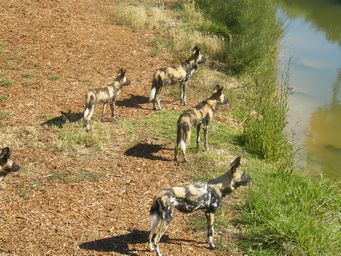
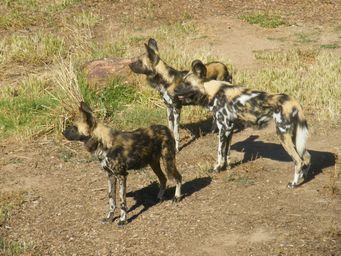
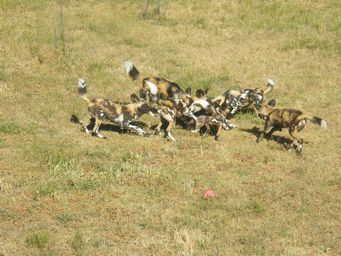
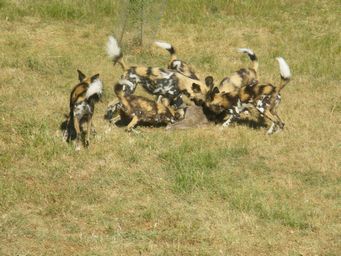
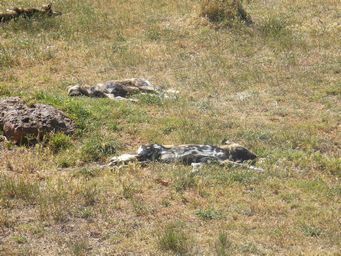
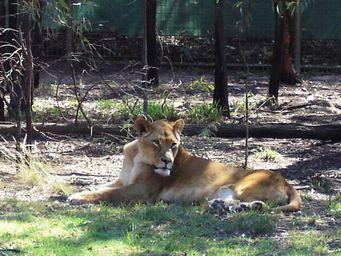
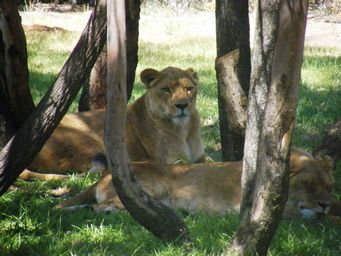
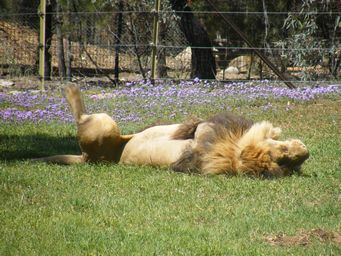
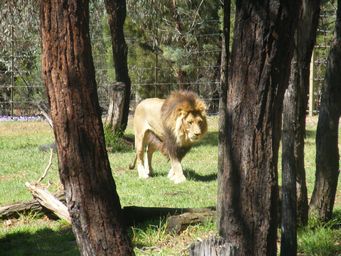
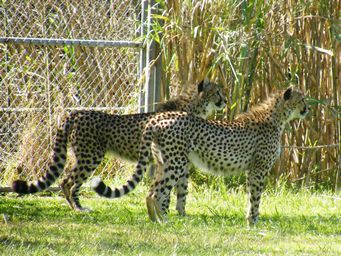
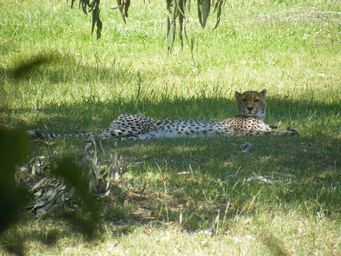
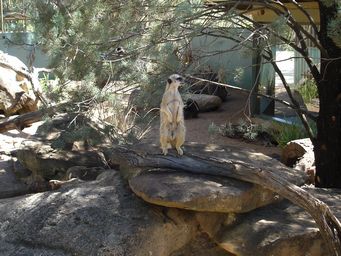
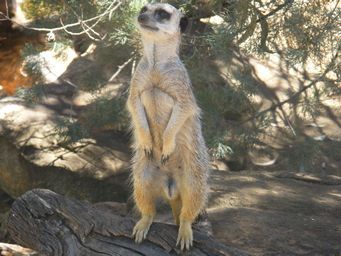
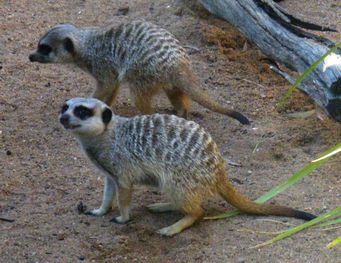
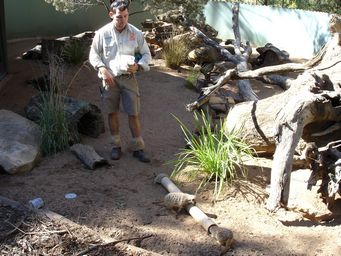
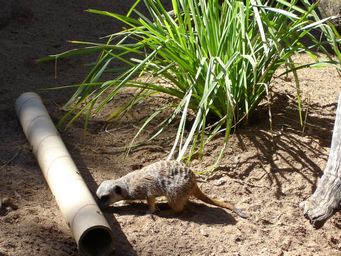
African Lions sleep up to twenty hours a day, and hunt mainly at night. They can consume up to forty kilos of meat in a sitting.